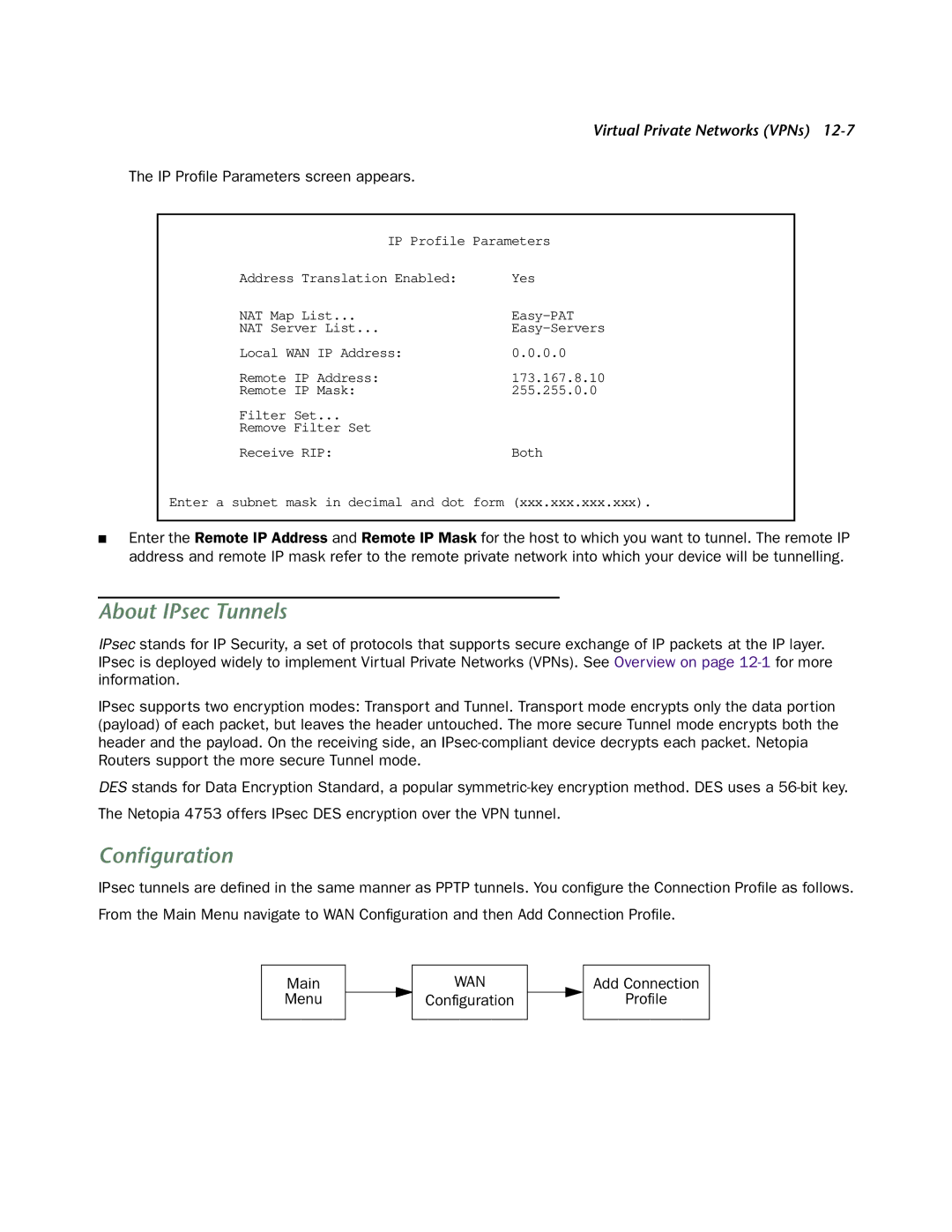
Virtual Private Networks (VPNs)
The IP Profile Parameters screen appears.
IP Profile Parameters
Address Translation Enabled: | Yes |
NAT Map List... | |
NAT Server List... | |
Local WAN IP Address: | 0.0.0.0 |
Remote IP Address: | 173.167.8.10 |
Remote IP Mask: | 255.255.0.0 |
Filter Set... |
|
Remove Filter Set |
|
Receive RIP: | Both |
Enter a subnet mask in decimal and dot form (xxx.xxx.xxx.xxx).
■Enter the Remote IP Address and Remote IP Mask for the host to which you want to tunnel. The remote IP address and remote IP mask refer to the remote private network into which your device will be tunnelling.
About IPsec Tunnels
IPsec stands for IP Security, a set of protocols that supports secure exchange of IP packets at the IP layer. IPsec is deployed widely to implement Virtual Private Networks (VPNs). See Overview on page
IPsec supports two encryption modes: Transport and Tunnel. Transport mode encrypts only the data portion (payload) of each packet, but leaves the header untouched. The more secure Tunnel mode encrypts both the header and the payload. On the receiving side, an
DES stands for Data Encryption Standard, a popular
The Netopia 4753 offers IPsec DES encryption over the VPN tunnel.
Configuration
IPsec tunnels are defined in the same manner as PPTP tunnels. You configure the Connection Profile as follows.
From the Main Menu navigate to WAN Configuration and then Add Connection Profile.
Main
Menu
WAN
Configuration
Add Connection
Profile
